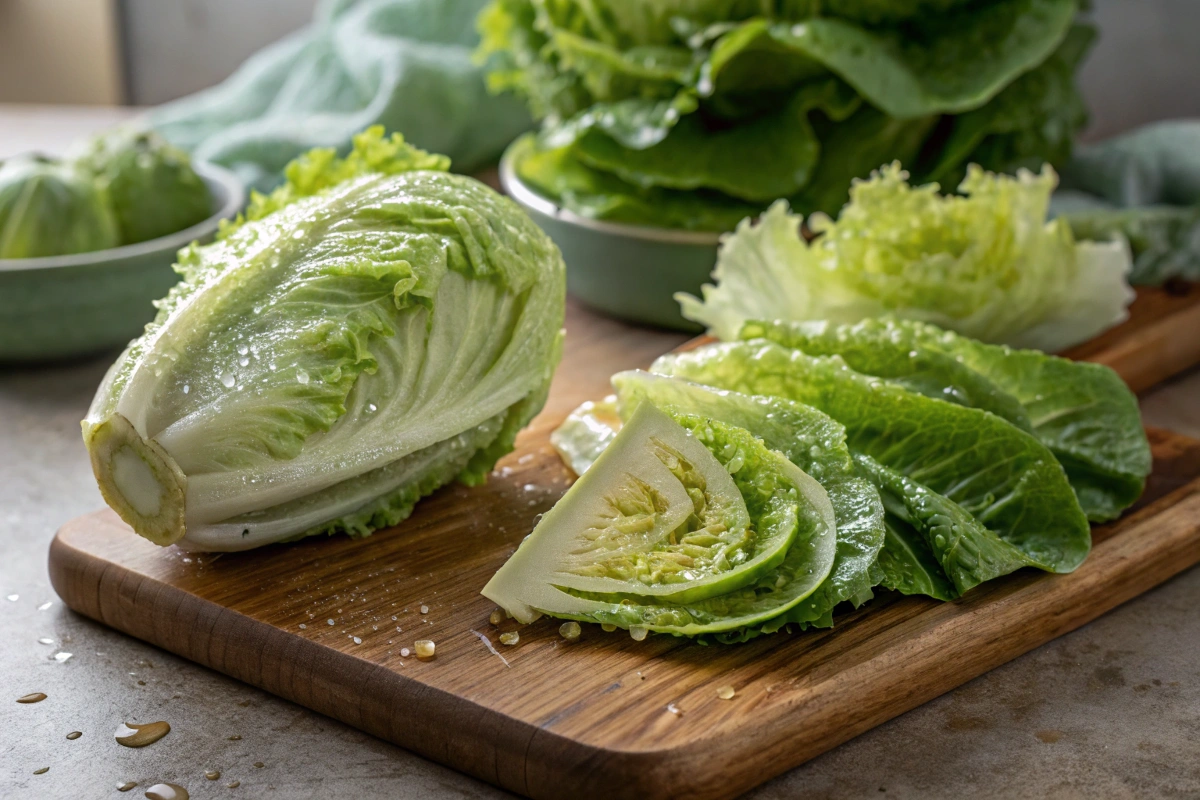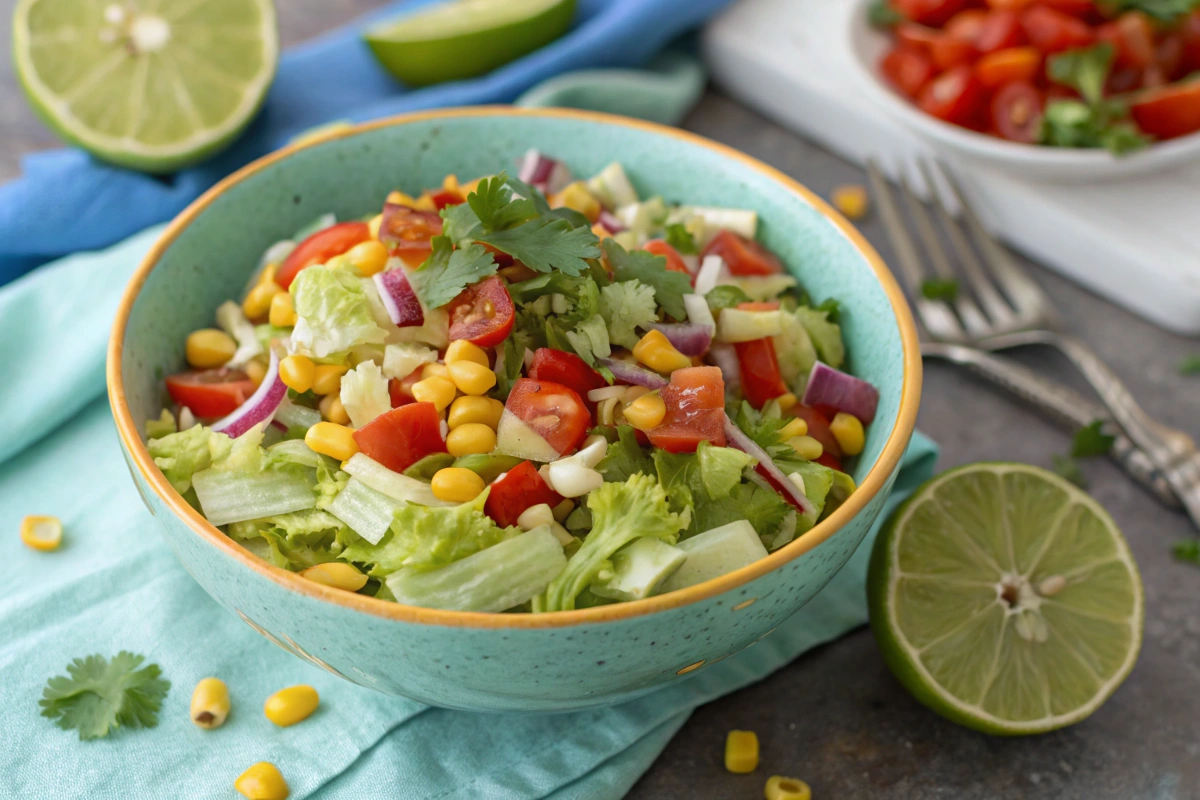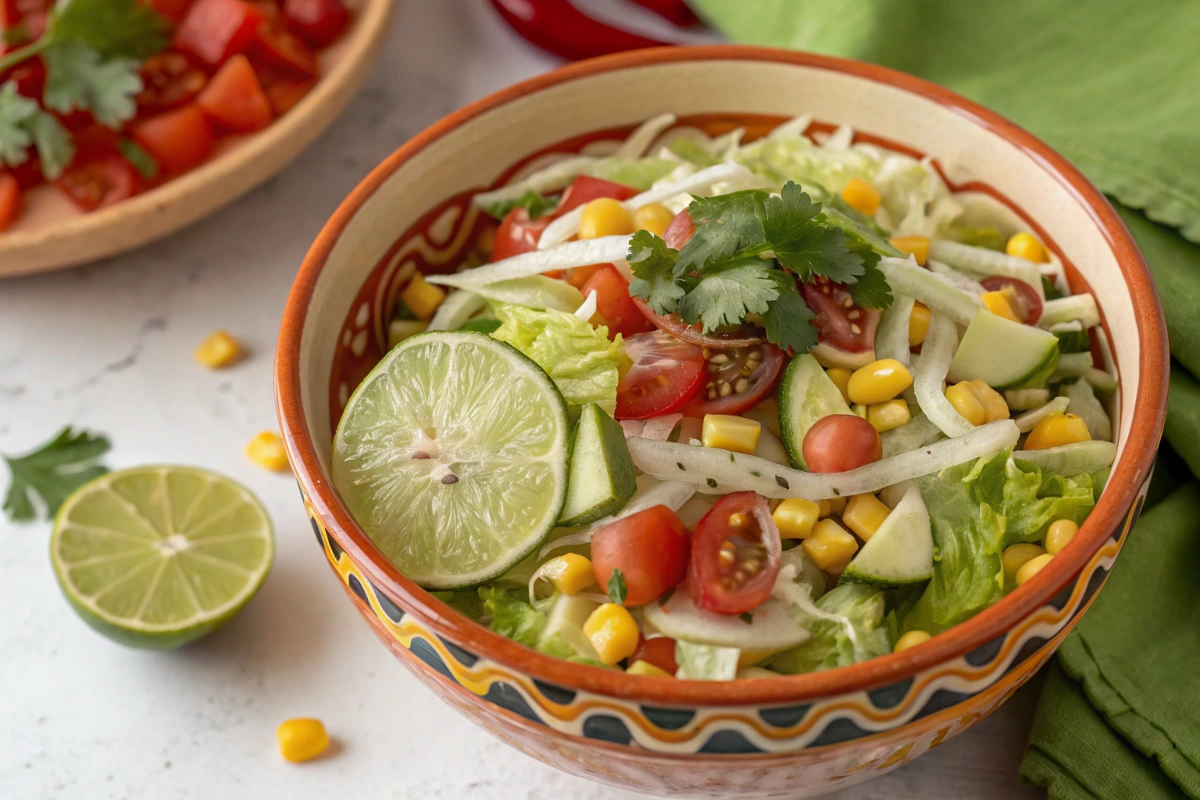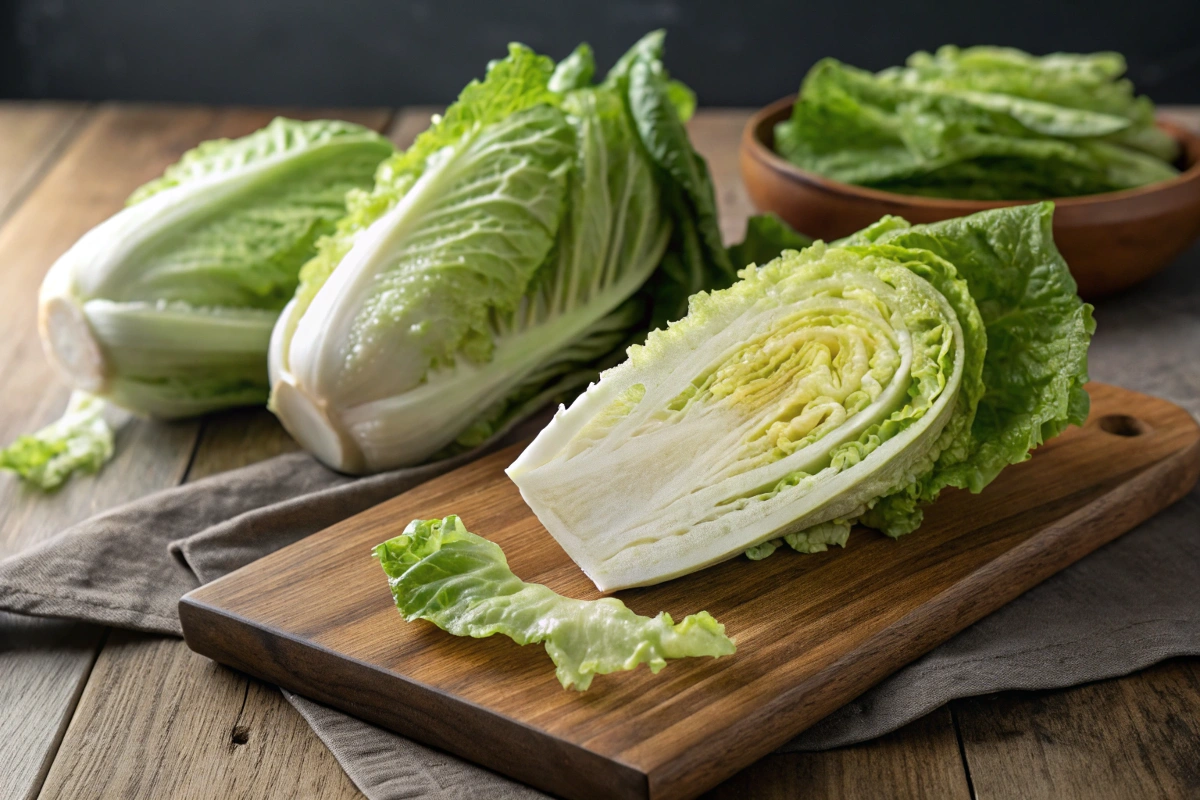This article explores the types of lettuce commonly found in Mexican dishes and why they are chosen.
What Kind of Lettuce Is Used in Mexican Food? A Culinary Dive
When you think about Mexican cuisine, you probably imagine vibrant colors and fresh flavors. Lettuce plays a key part in that picture. But, what kind of lettuce is used in Mexican food? It’s not always the same kind. In fact, there are several varieties that often appear, each adding a unique touch to different dishes. This article will explore these lettuce types, helping you understand why they are so popular in Mexican cooking. We’ll dive into the specifics of each type of lettuce, from the crisp iceberg to the more delicate butter lettuce, examining how they each compliment the rich and varied flavors of Mexican cuisine. Understanding the lettuce choice helps enhance your meals.
Common Lettuce Types in Mexican Dishes
Several lettuce varieties frequently make an appearance in Mexican food. Iceberg lettuce is perhaps the most commonly used option. However, there are other lettuce choices too. Each type of lettuce contributes a different flavor, texture, and appearance. Consequently, the specific lettuce used can affect the overall experience of a dish. While iceberg is a staple, other options such as romaine and even butter lettuce contribute to the rich tapestry of textures in Mexican cooking. Exploring these differences gives a new appreciation for the role lettuce plays.
Explore the question: Is Caesar Salad a Mexican salad?.
Iceberg Lettuce: A Classic Choice
Iceberg lettuce is widely popular, especially in the United States. Its crispness and mild flavor make it a good choice. Moreover, its sturdy leaves hold up well in various dishes. Iceberg lettuce is typically used in tacos and other dishes. Indeed, it offers a refreshing crunch. For example, consider a fully loaded taco. The iceberg lettuce provides a cool contrast to the other elements. Its mild flavor is also very adaptable, making it ideal for a variety of Mexican preparations. Consequently, it’s a reliable choice.
Romaine Lettuce: Adding a Hearty Crunch
Another popular lettuce choice is romaine lettuce. It has a slightly stronger flavor than iceberg. Romaine lettuce also has sturdy, elongated leaves. Its structure makes it suitable for various dishes. For instance, it is often used in salads or as a base for certain tacos. The slightly bitter taste compliments rich flavors. Therefore, it can be a great addition to heartier Mexican meals. Additionally, romaine provides a bit more nutrients than iceberg, making it a slightly healthier choice. Exploring different lettuce varieties opens up exciting possibilities.
Butter Lettuce: A More Delicate Option
Butter lettuce, also known as bibb or Boston lettuce, is less common but still used in Mexican food. This lettuce type is known for its soft, pliable leaves. Moreover, it has a very mild and slightly sweet taste. Butter lettuce can bring a different texture to a meal. For example, some may prefer its tender leaves to the crispness of iceberg. Its softer texture compliments certain preparations particularly well. While it is less sturdy than iceberg or romaine, its gentle nature makes it an excellent choice for certain dishes where a subtle touch is desired. Hence, it provides a unique contribution.
Why These Lettuce Varieties Are Favored
There are a few reasons why these lettuce types are preferred in Mexican dishes. Firstly, iceberg lettuce offers a great crunch, which enhances the overall texture of many Mexican foods. Secondly, it is very affordable and widely available. Thirdly, the mild flavor of iceberg doesn’t compete with the other bold flavors of Mexican cuisine. Furthermore, the structural integrity of iceberg allows it to hold up well under various toppings, making it practical. Likewise, romaine’s slight bitterness helps balance richer components, while butter lettuce lends a delicate touch.
Texture and Flavor Balance
Mexican food often includes many strong flavors. Lettuce acts as a balance. The crisp, mild lettuce varieties offer a refreshing contrast. Furthermore, they add a cool element that helps to cleanse the palate. Therefore, the lettuce choice is important for both texture and taste. The interplay between textures and flavors is a hallmark of Mexican food. Lettuce contributes significantly to this sensory experience. Consequently, the lettuce variety is essential.
Availability and Cost
Availability and cost are also factors. Iceberg and romaine lettuce are readily available throughout the year. They are also usually quite affordable. Consequently, these lettuce types are convenient options for restaurants and home cooks. These factors contribute to their popularity in Mexican dishes. Additionally, this consistency in availability and price makes them reliable options. Thus, they’re easy to incorporate into daily meals.
Versatility in Different Dishes
The various lettuce types used in Mexican food show just how flexible this ingredient can be. Iceberg provides a crisp bed for tacos and burritos. Romaine brings a robust texture to salads. Butter lettuce, on the other hand, adds a delicate touch. The lettuce used often depends on the type of dish being prepared. The versatility of these lettuce varieties is a major advantage. Furthermore, they can be easily adapted to suit a wide range of culinary needs.
The Role of Lettuce in Different Mexican Dishes
Lettuce is a key ingredient in many Mexican foods. Consider the classic taco. Here, lettuce adds a refreshing element that balances the rich flavors of meat or beans. Also, its cool texture contrasts nicely with the warm tortillas. Moreover, lettuce is often used in tostadas, enchiladas, and various salads, adding a layer of freshness and crunch. The role of lettuce goes beyond just a simple garnish. Indeed, it’s an essential component for the overall enjoyment of many dishes.
Tacos and Burritos
Lettuce is a staple in tacos and burritos. It provides that important cool, crisp contrast. Iceberg lettuce is the most popular choice here because of its sturdy leaves. Furthermore, it holds up well under various fillings. The lettuce not only adds a textural element but also makes the dish more refreshing. The mild flavor of iceberg ensures it does not clash with other, more powerful flavors in the taco. Specifically, it allows the primary ingredients to shine.
Salads and Bowls
Romaine lettuce is frequently used in Mexican-style salads. Its heartier leaves provide a sturdy base. Additionally, romaine has a slightly more pronounced flavor. Therefore, it holds its own alongside other bold ingredients. The lettuce choice in a salad is essential for both taste and texture. The sturdiness of romaine also prevents the salad from becoming soggy, especially with heavier dressings. Hence, it’s the perfect base for a salad.
Tostadas and Enchiladas
Lettuce, often shredded, is a popular topping for tostadas and enchiladas. It brings an element of freshness to the dish. Usually, iceberg lettuce is preferred for these preparations because of its mild flavor and crunch. The lettuce adds a cool contrast to the warm, often rich flavors of the main dish. Moreover, it introduces a refreshing element which balances out the heavier components of the dish.
Preparation Tips for Lettuce in Mexican Cooking
Preparing lettuce for Mexican cooking is typically quite simple. However, there are some tips to keep in mind. First, thoroughly wash and dry the lettuce. Second, shred the lettuce if needed for the dish. Finally, add it just before serving to maintain its freshness and crispness. These simple steps can ensure your lettuce is the best it can be. In addition, proper preparation also enhances food safety.
Washing and Drying
Washing lettuce thoroughly is important for food safety. Remove any outer leaves that seem wilted. Then, soak the lettuce in cold water. Finally, dry the lettuce well. This step helps to keep it crisp. Thus, you’ll get the best possible texture for your meal. Using a salad spinner or a clean kitchen towel are effective ways to dry lettuce. Therefore, the lettuce remains crisp and appealing.
Shredding and Chopping
When a recipe calls for shredded lettuce, there are a few approaches you can take. You can use a knife or a shredder. Remember to cut or shred the lettuce just before you’re going to use it. Also, avoid cutting it too far in advance. Consequently, this will prevent it from becoming soggy. The finer the shred, the easier it is to distribute the lettuce throughout the dish. Additionally, proper technique ensures even pieces.
Timing is Key
Add lettuce to your dish just before serving. This ensures it stays fresh and crisp. The longer it sits, the more likely it is to lose its texture. Therefore, it’s important to add lettuce at the end of the preparation process. This small detail makes a big difference in the overall experience. Furthermore, serving the lettuce immediately maximizes its taste and texture benefits.
The Lettuce and Health Aspect
Lettuce is not just about texture and flavor; it also offers some nutrients. While lettuce is low in calories, it does contain some essential vitamins and minerals. Consequently, lettuce can contribute to a balanced diet. Although it isn’t the most nutrient-rich food, it is a good addition to any meal. The nutritional benefits, even when not substantial, contribute to overall well-being.
Vitamins and Minerals
Lettuce provides vitamins like vitamin K and vitamin A. Also, it includes some minerals such as folate and potassium. Although these amounts aren’t particularly high, they contribute to your daily intake. Therefore, lettuce can be a healthy addition to your meal. These vitamins and minerals support various bodily functions.
Low in Calories
Lettuce is very low in calories. This makes it a great addition to many dishes. It provides bulk without adding significantly to your calorie count. For people watching their weight, lettuce is a smart choice. Consequently, it helps to increase volume without increasing calories. Therefore, it’s a good option for weight management.
Adding Fiber
Lettuce also provides some fiber. Fiber is important for digestion. Consequently, eating lettuce can help with a healthy digestive system. This is another good reason to include lettuce in your diet. Fiber adds bulk to stool, making it easier to pass. Additionally, it supports digestion and gut health.
Exploring Variations and Alternatives
While iceberg, romaine, and butter lettuce are common, there are some alternatives. These can provide different flavors and textures. Furthermore, you can use these variations to add an interesting touch to your meals. Therefore, it’s worth exploring some of these other options. Ultimately, experimenting with different greens can open up a new dimension in your culinary creations.
Other Lettuce Choices
Some people may use other lettuce types, like red leaf lettuce, in Mexican food. Red leaf lettuce has a slightly bitter taste. It also provides a nice color contrast. In addition, it has similar qualities to romaine but is not used as much as iceberg, or romaine. The vibrant color of red leaf lettuce adds visual appeal. Additionally, its flavor compliments richer dishes.
Using Cabbage
Sometimes, cabbage is used instead of lettuce in Mexican cuisine. Both green and red cabbage are great options. Cabbage provides a similar crunch but also has a slightly stronger taste. Therefore, if you want to explore, this could be an interesting substitution. Cabbage is also affordable and readily available. Furthermore, it holds up well in cooked and raw applications.
Herbs for Freshness
Instead of or in addition to lettuce, you can also use fresh herbs. Cilantro, for instance, adds a lot of flavor. Moreover, it brings some of the same freshness as lettuce. Therefore, it could be an effective way to replace or compliment the lettuce. Parsley is another herb option to explore. Together, these herbs can provide a different kind of freshness.
FAQs: What Kind of Lettuce Is Used in Mexican Food?
What is the most common lettuce in Mexican food?
Iceberg lettuce is by far the most common choice. Its crispness and mild flavor make it a great match for many Mexican dishes. Also, it’s widely available and inexpensive. Therefore, it’s a popular option. Indeed, it’s a reliable option for many restaurants and home cooks.
Can you use other lettuce types in Mexican food?
Yes, definitely! While iceberg lettuce is common, romaine and butter lettuce are used. Additionally, you can even use other greens or cabbage. The lettuce choice depends on your preference and the specific dish. Exploring different lettuce varieties allows for customization and personal preferences.
Why is lettuce often served shredded?
Shredded lettuce is easy to handle in tacos and burritos. Furthermore, it provides an even distribution in a dish. It also ensures that the lettuce isn’t too overpowering. Moreover, shredded lettuce allows for a better mix with other ingredients.
Does lettuce add any nutrients to Mexican food?
Yes, lettuce does add some nutrients, although it is not rich in them. It contains vitamins, minerals, and fiber. While low in calories, lettuce compliments a balanced diet. Even small amounts of nutrients can contribute to overall health.
Conclusion: What kind of lettuce is used in Mexican food?
So, what kind of lettuce is used in Mexican food? Primarily, iceberg lettuce is the most common choice. Its widespread availability, mild flavor, and satisfying crunch make it a favorite for tacos, burritos, and many other dishes. Romaine and butter lettuce are also used, though less often. Each lettuce variety provides a different texture and flavor. Iceberg lettuce offers a refreshing crunch, while romaine lettuce is a heartier option and butter lettuce provides a softer, more delicate texture. Therefore, the lettuce used depends on the specific dish and the desired effect. Ultimately, lettuce adds a layer of freshness and balance to many Mexican dishes. Consequently, it is an essential component of Mexican cuisine. The careful choice of lettuce can truly elevate a dish. Accordingly, understanding this helps us appreciate the depth and complexity of Mexican cooking. Thus, lettuce is far more than just a garnish. It’s a key player in the culinary landscape.
Learn more about the variations of Mexican salads for inspiration.




